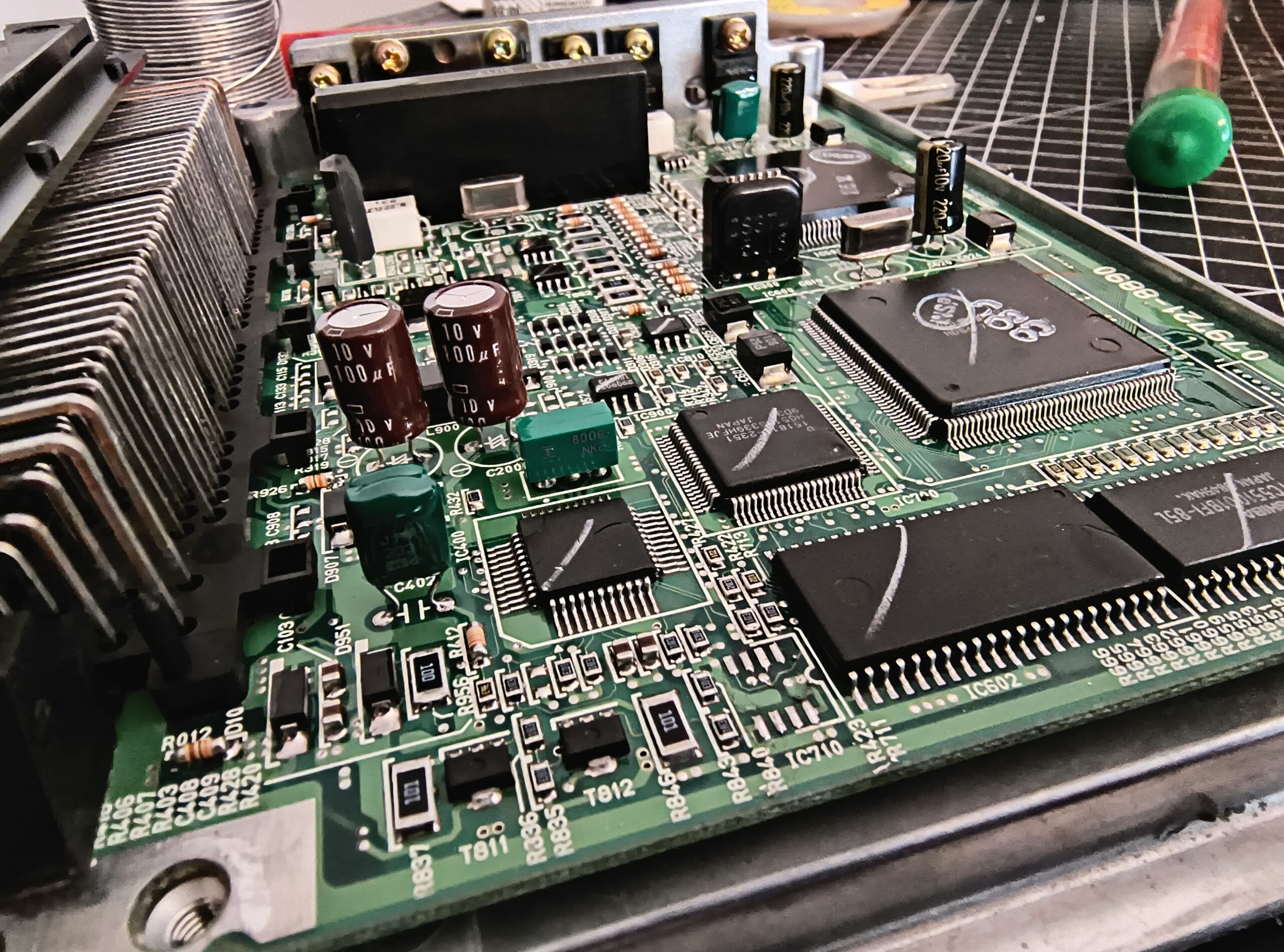Denso is not usually a problem as such, however in this case there weren’t any programming tools available which could actually connect to this exact model of ECU, only a fairly similar Denso ECU from a Volvo however the board was totally different inside. This meant that it was time to take out the soldering iron.
It’s been a while since I did any soldering as I like to buy the latest equipment that can bench program ECUs in bench service mode, this means you don’t even need to open the ECU, however in this case we had to do it the old school way.
By a process of elimination and not finding any other 8 pin EEPROM chips on the board I decided the most likely chip to contain the immobiliser data was the 93C56 chip, so I took this off using some chip-quik solder. I like this product because it stays liquid for much longer than normal solder and also required much less heat.
After filling the legs with solder I gently rotated the chip off the board being extra careful not to pull any tracks off the board (yes it’s easy to do, especially when the ECU manufacturers glue the immobiliser chip down!), next I cleaned it up and did the same with the donor ECU. The final job was to tin the pads with some fresh solder and gently solder the immobiliser EEPROM back to the donor board.
After months of not being able to use the car, the customer fitted the ECU and it fired straight up, no faults and no fault lights. A perfect outcome.
